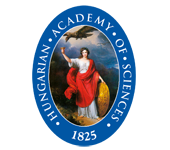Programme / Thematic Sessions III. e. Hunting for Alien Worlds: Recent Advances in Exoplanet Research
‹ back to Programme listerDay 3
Friday / 22 NOV
11:30 - 13:00
Exoplanet research is one of the most important drivers in modern astronomy. It is a quest for accuracy that motivates astronomers and engineers from all over the world to collaborate on more and more complex space missions. Professor László Kiss, Director General of the Research Centre for Astronomy and Earth Sciences (Budapest, Hungary), opened the session by introducing four speakers, each of whom talked about space telescopes designed specifically for exoplanet science.
Professor Jack Lissauer (NASA Ames Research Center, Moffett Field, CA, USA) summarised the main results of NASA’s Kepler mission, which has discovered most of the planets known to humanity. Kepler’s method was to observe transit light curves, that is, the dimming of a star’s brightness due to a partial eclipse by a planet orbiting that star. Kepler monitored a large number of stars and found several small rocky planets and Neptune-size planets, many of them in multi-planet systems. These results taught us that exoplanets are common, but planetary systems are very diverse: no system like our Solar System and no planet like our Earth have yet been found.
Professor Christopher Broeg (University of Bern, Switzerland) spoke about ESA’s CHEOPS mission, to be launched on 17 December 2019. CHEOPS is a follow-up mission to observe the light curves of stars known to host transiting exoplanets in order to measure the planets’ sizes more precisely. It will also collect the best targets for future in-depth characterisation, and will allow 20% of its time for high-precision photometry science in any other fields of astronomy. The ability to re-observe any target makes CHEOPS unique.
Professor Szilárd Csizmadia (German Aerospace Center, Berlin, Germany) talked about large photometric exoplanet space surveys from CoRoT to PLATO. The CoRoT mission, led by CNES and ESA, provided the first exoplanet discoveries from space, discovered the first super-Earth (an exoplanet slightly more massive than Earth), and more than doubled the number of exoplanets known at the time. ESA’s PLATO mission will target bright stars and aims to detect and characterise Earth-sized planets in the habitable zone around Sun-like stars. These are the exoplanets that may have liquid water on their surfaces.
Professor Giovanna Tinetti (University College London, UK) explained that we now know of more than 4,000 confirmed exoplanets, and their numbers are exponentially increasing. These discoveries mean new questions about the diversity of these objects as well as their composition, atmospheres, weather and habitability. ESA’s ARIEL mission, to be launched in 2028, will measure the chemical composition and physical conditions in the atmospheres of about 1,000 exoplanets. It will use spectroscopic methods at visible and infrared wavelengths and will help us understand how planetary systems form and evolve.
In the closing discussion, the speakers emphasised that before 1995, the only known planets were in our Solar System. In 2019, Michel Mayor and Didier Queloz received the Nobel Prize in physics for discovering the first exoplanet. Their discovery has forever changed our conceptions of the world. We now know that planets are ubiquitous, and most stars have them, but we still have not found an alternative for Earth. We have a responsibility to protect our planet.
Rapporteur: Ágnes Kóspál, Research Advisor, Konkoly Observatory
Moderator (confirmed):
Speakers (confirmed):
- Giovanna Tinetti, Professor of Astrophysics, University College London, Faculty of Maths & Physical Sciences, Dept of Physics & Astronomy
- Jack Lissauer, Space scientist, NASA Ames Research Center, Space Science & Astrobiology Division
- Christopher Broeg, Space scientist, University of Bern, Faculty of Science, Center for Space and Habitability (CSH)
- Szilárd Csizmadia, Researcher, German Aerospace Center, Institute for Planetary Research
